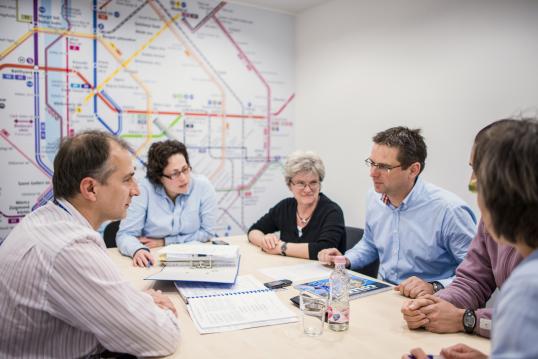- Topic
- Public and stakeholder involvement
- Country
- Hungary
- Resource type
- Case study
first published 31/05/2017
When selecting the measures to be included in its SUMP, Budapest's transport operator, Budapesti Közlekedési Központ (BKK), tested out a number of new approaches in the processes involved in making the decisions. Various parties were consulted at national and international level, whilst best practice examples were sought from other European cities. Software was then used to evaluate the choices made. The Balázs Mór Plan (BMT) is Budapest's first transport development strategy based on SUMP methodology, and its integrated approach places the focus on people and the environment.
Context
Budapest's SUMP, the Balázs Mór Plan (BMM) was officially adopted in the summer of 2014, and is now in the implementation phase. It has also been integrated into the Budapest 2030 Urban Development Concept.
As is made clear in the European Commission’s SUMP Guidelines, the development of effective packages of measures lies at the core of sustainable urban mobility planning. The following questions should serve as the starting point for deciding upon measures: what, how, where, and when.
Only well-selected measures will ensure that the defined objectives and targets for a SUMP are met. Those that are chosen should:
- build on discussions with key stakeholders;
- take into account experiences from other places with similar policies;
- ensure value for money;
- try to create synergies between measures insofar as possible.
This is the approach that was utilised in Budapest.
In action
As part of the new approach, measures are no longer defined in terms of single transport modes. Instead, they take the whole transport system into consideration.
Institutional co-operation also constitutes a vital element of the selection process. BKK has worked together with a wide range of stakeholders and external experts when identifying and fine-tuning its measures, including the Hungarian Transport Administration; the public investor National Infrastructure Developer; the Hungarian National Railway; and JASPERS.
Additionally, international partnerships with several European cities facilitated the adoption of best practice examples for selecting measures. An innovative piece of decision support software, KonSULT, was then used to evaluate the choices that were made. The software is able to provide a solid justification for professional decision-making and helps non-professionals understand the reasoning behind the selection.
The newly developed Integrated Transport Model of Budapest is going to facilitate decision-making on projects later in the plan implementation phase. A methodology for project ranking is also being devised with the help of external experts.
Results
The processes that BKK tested and implemented for the selection of effective measures were based on the sixth step of the SUMP cycle (‘Develop effective packages of measures’). BKK cooperated with a wide range of stakeholders and external experts when ascertaining the most effective measures.
Inter-institutional cooperation facilitated the development of measures that BKK will carry out in conjunction with regional and national transport service providers. Most of these are related to railways. When fine-tuning the measures with the partners outlined above, 25 measures were changed.
As a result of the public consultation,16 measures were amended and three new ones formulated. With the help of SUMP Guidelines and methodology, BKK has been able to move away from the approach in the previous transport development strategy that led to measures being based on the mode of transport.
The measures support the strategic transport objectives of Budapest and cover the whole field of urban transport. This was attested to following a comparison of the BMT and KonSULT measures.
The finalised version of BMT vol. 1, containing the strategic goals and measures, was approved by the General Assembly of Budapest on 23 June 2015. A total of 59 measures were outlined in the Plan.
Challenges, opportunities and transferability
The main challenges involved in the process were setting a feasible and realistic timeline for inter-institutional cooperation, as well as developing appropriate communication channels and platforms for the consultation that took place during the pilot project.
When determining the BMT, the priorities contained within city policies and development plans were vital. The future vision and the environmental, social and economic objectives of the city (for reference see the Budapest 2030 Urban Development Concept) also played a key role in selecting the measures. All SUMPs should be developed with the wider policy context of the associated city in mind, and ideally in line with other policy areas.

